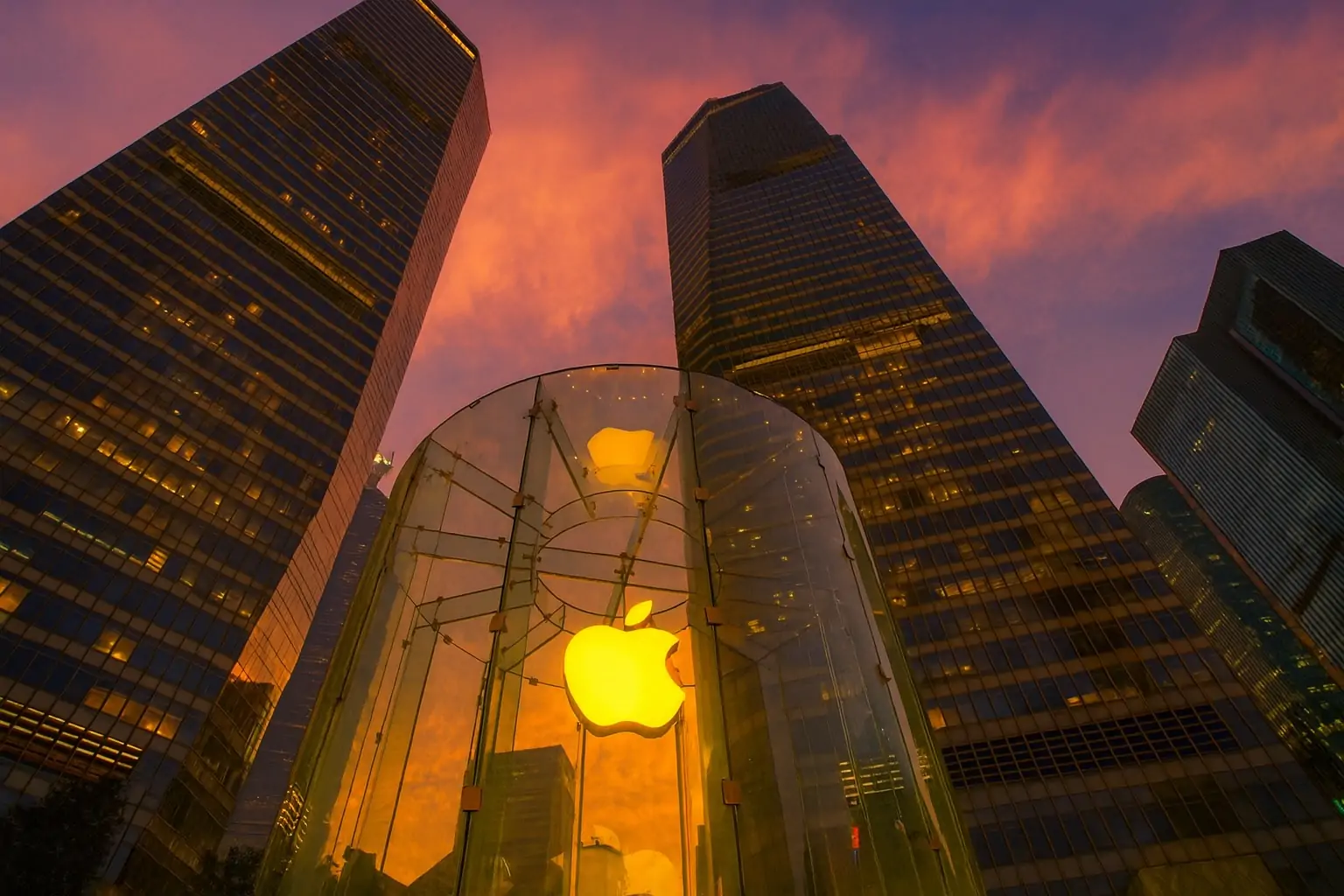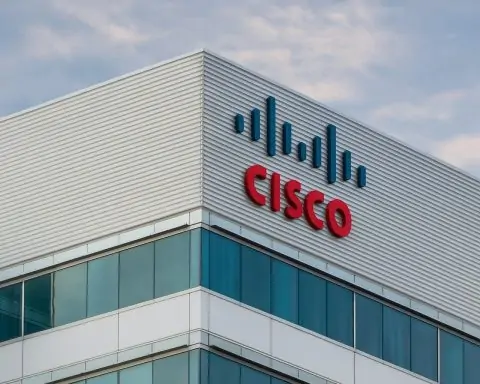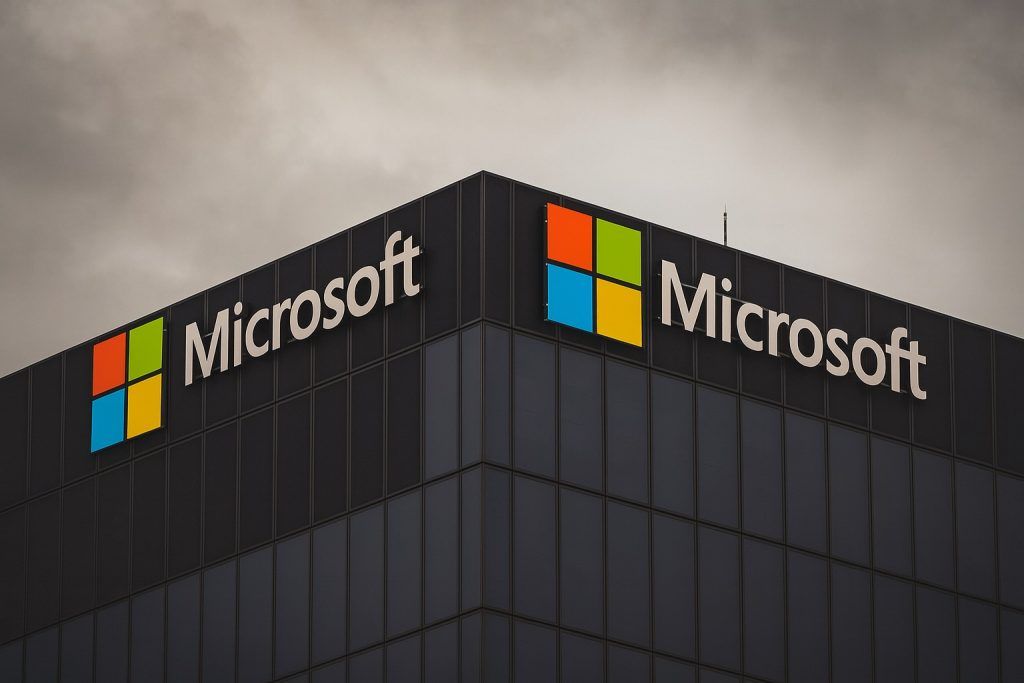Apple (NASDAQ: AAPL) shares traded lower on Monday, November 17, 2025, as a cluster of high‑profile headlines – from Warren Buffett cutting his position again to a $634 million patent verdict and fresh CEO succession chatter – collided with already rich valuations.
By the U.S. session on Monday, Apple stock was hovering in the high‑$260s, down roughly 1.5–2% from Friday’s close around $272.4, after trading between about $266.7 and $270.5 during the day. That still leaves AAPL near the top of its 52‑week range of $169.21 to $277.32, with a market value a little above $3 trillion. [1]
How Apple Stock Traded on November 17, 2025
Market data providers show only small variations, but together they sketch a clear picture of Monday’s session for AAPL: [2]
- Recent close: Various feeds put Monday’s official close in a tight band around $267–$268 per share, down about 1.8–1.9% from Friday’s $272.41 finish.
- Intraday range: Apple changed hands roughly between $266.65 and $270.49.
- Volume: Around 21–24 million shares traded, a touch below the stock’s recent average daily volume near 24 million. [3]
- 52‑week range: About $169.21 to $277.32, keeping today’s price close to the upper end of its one‑year band. [4]
- Valuation: Depending on the source and exact price snapshot, Apple is trading at roughly 35–37× trailing earnings, well above its long‑term average and many hardware peers. [5]
In other words, Monday’s pullback is modest in absolute terms, but it’s coming from near-record territory and against a backdrop of mounting questions about leadership, legal risk and future growth.
Why Is Apple Stock Down Today?
1. Berkshire Hathaway Trims Apple Again and Rotates Into Alphabet
The headline weighing most obviously on AAPL today: Warren Buffett’s Berkshire Hathaway has once again cut its Apple stake, even as it opened a multi‑billion‑dollar position in Alphabet.
Regulatory filings and follow‑up coverage show Berkshire reduced its Apple holdings by roughly 15% in the third quarter, to about 238.2 million shares, while buying around 17.85 million shares of Alphabet, a stake worth just under $5 billion. [6]
Reuters notes that Alphabet jumped more than 4% on Monday after the Berkshire disclosure, while Apple shares fell about 1.4% as investors digested another round of selling from one of its most famous long‑term backers. [7]
Commentary pieces such as Investors Are Sick of Apple at 24/7 Wall St. argue that the repeated trims have become a psychological overhang for shareholders, especially because Apple’s year‑to‑date share gain – low double digits – only roughly matches or slightly lags the broader market despite stellar fundamentals. [8]
Key takeaway: Buffett is still heavily invested – Apple remains Berkshire’s largest single holding – but the steady reduction reinforces the idea that the easy money may have been made.
2. $634 Million Masimo Verdict and a Possible New Apple Watch Import Ban
Another major narrative pressuring the stock: legal risk around the Apple Watch.
On Friday, a U.S. federal jury in California ordered Apple to pay $634 million in damages to medical‑technology firm Masimo, finding that Apple’s blood‑oxygen monitoring features in the Apple Watch infringe a Masimo patent. Apple says it disagrees with the verdict and plans to appeal. [9]
At the same time, the U.S. International Trade Commission (ITC) has opened a new proceeding to decide whether Apple’s redesigned watches – which were tweaked to get around a prior import ban – still violate Masimo’s patents and should face a renewed U.S. import ban. The ITC aims to complete this fresh investigation in about six months. [10]
Pre‑market rundowns ahead of Monday’s open flagged the Masimo verdict and ITC review as a key overhang for AAPL, particularly because wearables are both a high‑margin category and an important part of Apple’s “health and wellness” narrative. TechStock²+1
Why it matters for the stock:
- The $634 million award is material but not existential for a company that generated over $27 billion of net income in the latest quarter, yet it sets a precedent in a long‑running dispute. [11]
- A renewed import ban on newer Apple Watch models could be a bigger headache, potentially forcing further product changes or temporary pullbacks from key markets. [12]
Investors are discounting a range of outcomes, and Monday’s decline reflects that legal risk being priced in alongside other factors.
3. CEO Succession: Tim Cook’s Exit Appears Closer
Leadership headlines also colored trading in Apple stock on Monday.
According to reporting from the Financial Times, echoed by outlets including Seeking Alpha and CoinCentral, Apple has accelerated CEO succession planning, with longtime chief Tim Cook increasingly expected to step down as early as next year. [13]
- John Ternus, senior vice president of hardware engineering, is widely viewed as the front‑runner to take over. [14]
- Apple is not expected to announce a successor before its late‑January earnings report, in order to keep leadership stable through the crucial holiday quarter. [15]
Apple has declined to comment publicly on the reports, leaving the market to interpret the drumbeat of leaks and analysis. While Cook is 65 and has led Apple since 2011, any transition at the top of the world’s most valuable consumer‑tech franchise introduces uncertainty about future strategy and capital allocation.
For now, the story seems to be less about imminent crisis and more about “end of an era” anxiety – but it’s yet another factor nudging some investors to trim positions near all‑time highs.
4. Rich Valuation and Mixed Hardware Data: KeyBanc Stays Cautious
Ahead of Monday’s session, KeyBanc Capital Markets reiterated a “Sector Weight” rating on Apple, citing “mixed” spending data in the company’s hardware channels. [16]
Key points from the note:
- KeyBanc’s proprietary data showed indexed hardware spending down 4% month‑over‑month and 12% year‑over‑year for October – better than typical seasonal drops but still softer than the growth the firm wants to see. [17]
- Using Investing.com and other data, the report highlighted that Apple is trading at a P/E above 36, near its all‑time high valuation multiples and close to its 52‑week price ceiling around $277.32. [18]
The message: fundamentals remain solid, but at current prices the stock already bakes in a lot of optimism, so KeyBanc suggests investors may want to wait for pullbacks instead of chasing new highs.
That stance lines up with broader commentary – including from 24/7 Wall St. and other market watchers – that sees Apple’s single‑digit to low‑double‑digit year‑to‑date return as underwhelming when judged against its hype, especially while the S&P 500 delivers mid‑teens gains and other megacap tech names rally harder. [19]
5. Broader Market Context: Tech Wobble, Nvidia and Macro Jitters
Monday’s action in Apple also can’t be separated from the macro picture.
A Reuters midday market update described U.S. indices as essentially flat – with the S&P 500 up 0.02% and the Nasdaq up 0.16% – while the tech sector and semiconductor stocks traded modestly lower ahead of a critical earnings report from Nvidia and a catch‑up wave of government economic data. [20]
Apple, as a heavyweight in both the S&P 500 and Nasdaq, often trades as a macro proxy:
- Investors are bracing for Fed meeting minutes and delayed jobs numbers later this week, which could reshape expectations around rate cuts. [21]
- If yields rise or risk appetite weakens, richly valued megacaps like Apple are usually among the first places portfolio managers trim.
So part of today’s dip is simply profit‑taking in a crowded trade, amplified by stock‑specific headlines.
Under the Surface: Fundamentals Still Look Strong
Despite the red ink on the screen, the fundamental story hasn’t suddenly broken.
Record Q4 2025 Results
On October 30, Apple reported fiscal Q4 2025 (the September quarter) results that beat expectations on both revenue and earnings: [22]
- Revenue: $102.5 billion, up 8% year‑over‑year, a new September‑quarter record.
- Diluted EPS: $1.85, up 13% year‑over‑year on an adjusted basis.
- iPhone: Record September‑quarter revenue, helped by the launch of the iPhone 17 family and iPhone Air.
- Services: Another all‑time revenue high, reinforcing Apple’s shift toward recurring, higher‑margin businesses.
Apple’s board also declared a $0.26 per‑share dividend, paid on November 13 to shareholders of record as of November 10. [23]
iPhone 17 Demand: 22% China Sales Boost
Fresh data released last week suggests the iPhone 17 launch is off to a strong start in China, a critical market where Apple has faced stiff competition from local brands:
- Research firm Counterpoint, cited by Reuters, found that iPhone sales in China rose 22% year‑over‑year in the first month after the iPhone 17 launch on September 19, even as the broader smartphone market declined. [24]
That aligns with Apple management’s upbeat tone on early iPhone 17 demand during the Q4 earnings call and helps support the case that the current product cycle is stronger than the iPhone 16 cycle.
AI and Strategy: Apple Leans on Google’s Gemini While Building Its Own
One recurring theme in recent coverage is that Apple still lags peers in visible AI products, even as it invests heavily behind the scenes.
Several outlets, citing Bloomberg and Reuters, report that Apple is preparing to use Google’s Gemini AI model – a roughly 1.2‑trillion‑parameter system – to power a revamped version of Siri and broader “Apple Intelligence” features, in a deal that could cost Apple about $1 billion per year. The upgraded Siri is expected to arrive around spring 2026. [25]
Apple has also previously acknowledged that some of its own AI improvements to Siri have been delayed to 2026, underscoring the perception that it’s playing catch‑up with rivals like Google, Microsoft and Amazon. [26]
For investors, this is a double‑edged sword:
- On one hand, the Gemini tie‑up offers a near‑term bridge that could meaningfully improve user‑facing AI features.
- On the other, reliance on a competitor’s model, combined with delays to in‑house AI, feeds the narrative that Apple is late to the AI boom – a concern that commentaries like 24/7 Wall St.’s “Investors Are Sick of Apple” have leaned into. [27]
Technical Picture: Still Above Key Averages, But Below Resistance
Short‑term traders are also watching technical levels highlighted in Monday’s coverage.
Benzinga, citing data from Benzinga Pro, notes that: [28]
- AAPL is trading roughly 5% above its 50‑day moving average (around $255.9).
- The stock sits nearly 20% above its 200‑day moving average near $225.4.
- A nearby support zone is seen around $266–$267, with resistance just below the 52‑week high in the mid‑$270s.
That lines up with independent technical analyses that flagged support near $265.5 and resistance around $272–$277coming into this week, suggesting Apple remains in an uptrend but is consolidating just below a key ceiling. [29]
If legal or macro headlines worsen, a break below support could invite deeper profit‑taking; conversely, a calm macro backdrop and positive follow‑through from iPhone demand could see AAPL re‑test or even break through its highs.
What Today’s Move Means for Investors
Putting the pieces together, Monday’s pullback in Apple stock looks less like a shock event and more like a repricing of risk around a very popular, very expensive name.
Bullish arguments now in play:
- Record Q4 results and robust iPhone 17 demand, including that 22% sales jump in China. [30]
- A massive, sticky installed base and growing high‑margin Services segment. [31]
- Strong long‑term shareholder returns – CoinCentral pegs Apple’s five‑year gain around 135%, comfortably beating major indices. [32]
Bearish or cautious arguments:
- Valuation in the mid‑30s P/E range despite slower earnings growth than some AI‑first peers. [33]
- Heightened legal and regulatory risk from the Masimo verdict, potential watch import bans and ongoing scrutiny of App Store practices, especially in the EU. [34]
- Leadership uncertainty as Tim Cook’s eventual exit moves from distant speculation to a clearly telegraphed succession process. [35]
- Concerns that Apple is playing catch‑up in AI, leaning on Google’s Gemini in the near term while its own “Apple Intelligence” roadmap stretches into 2026. [36]
For long‑term investors, none of today’s stories fundamentally rewrite the Apple thesis, but together they may justify demanding a wider margin of safety than when the stock was cheaper.
Bottom Line on AAPL for November 17, 2025
On November 17, 2025, Apple stock is:
- Trading down modestly on the day, but still close to all‑time highs and the top of its 52‑week range. [37]
- Navigating a complex mix of headlines: Buffett’s continued trimming, a major patent verdict and possible watch import ban, CEO succession chatter, and cautious analyst commentary on valuation. [38]
- Backed by strong recent fundamentals, especially in iPhone and Services, and buoyed by early data showing iPhone 17 is resonating with Chinese consumers. [39]
Whether today’s dip is a buyable wobble or the start of a deeper repricing will likely depend on:
- How the Masimo and ITC cases evolve.
- The market’s reaction to upcoming macro data and Fed signals.
- Apple’s ability to reassure investors on leadership and AI execution over the next couple of quarters.
As always, this article is for informational purposes only and does not constitute investment advice. Investors should consider their own risk tolerance, time horizon and portfolio mix – and, ideally, consult a qualified financial professional – before making any decisions about Apple stock.
References
1. finance.yahoo.com, 2. finance.yahoo.com, 3. finance.yahoo.com, 4. www.macrotrends.net, 5. www.gurufocus.com, 6. www.benzinga.com, 7. www.reuters.com, 8. 247wallst.com, 9. www.reuters.com, 10. www.reuters.com, 11. www.apple.com, 12. www.reuters.com, 13. seekingalpha.com, 14. coincentral.com, 15. coincentral.com, 16. m.investing.com, 17. m.investing.com, 18. m.investing.com, 19. 247wallst.com, 20. www.reuters.com, 21. www.reuters.com, 22. www.apple.com, 23. www.apple.com, 24. www.reuters.com, 25. www.reuters.com, 26. www.reuters.com, 27. 247wallst.com, 28. www.benzinga.com, 29. copygram.app, 30. www.apple.com, 31. www.stocktitan.net, 32. coincentral.com, 33. m.investing.com, 34. www.reuters.com, 35. seekingalpha.com, 36. www.reuters.com, 37. finance.yahoo.com, 38. www.reuters.com, 39. www.apple.com







